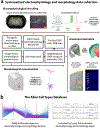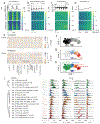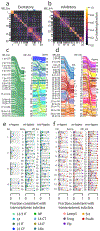Classification of electrophysiological and morphological neuron types in the mouse visual cortex
- PMID: 31209381
- PMCID: PMC8078853
- DOI: 10.1038/s41593-019-0417-0
Classification of electrophysiological and morphological neuron types in the mouse visual cortex
Abstract
Understanding the diversity of cell types in the brain has been an enduring challenge and requires detailed characterization of individual neurons in multiple dimensions. To systematically profile morpho-electric properties of mammalian neurons, we established a single-cell characterization pipeline using standardized patch-clamp recordings in brain slices and biocytin-based neuronal reconstructions. We built a publicly accessible online database, the Allen Cell Types Database, to display these datasets. Intrinsic physiological properties were measured from 1,938 neurons from the adult laboratory mouse visual cortex, morphological properties were measured from 461 reconstructed neurons, and 452 neurons had both measurements available. Quantitative features were used to classify neurons into distinct types using unsupervised methods. We established a taxonomy of morphologically and electrophysiologically defined cell types for this region of the cortex, with 17 electrophysiological types, 38 morphological types and 46 morpho-electric types. There was good correspondence with previously defined transcriptomic cell types and subclasses using the same transgenic mouse lines.
Conflict of interest statement
COMPETING INTERESTS
The authors declare no competing interests.
Figures







References
-
- Zeng H & Sanes JR Neuronal cell-type classification: challenges, opportunities and the path forward. Nat. Rev. Neurosci. 18, 530–546 (2017). - PubMed
Publication types
MeSH terms
Grants and funding
LinkOut - more resources
Full Text Sources
Other Literature Sources

